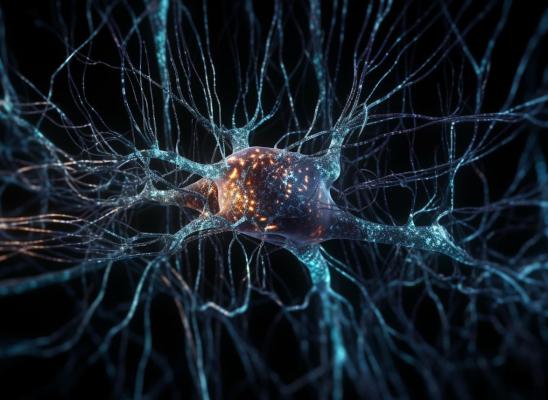Early Onset of TTM: Looking for the Neurodevelopmental Connection

Online test
Find out the severity of your symptoms with this free online test
Trichotillomania (TTM) is an obsessive-compulsive related disorder characterized by the repetitive pulling of hair that results in hair loss. While onset is generally in childhood, it is frequently seen across the child development continuum, beginning in infancy. Overall, TTM tends to be reported more frequently in females. What causes hair pulling is not entirely clear, but it often resolves as the child matures. Sometimes, though, the hair-pulling behavior doesn’t resolve and, over time, creates distress and can impair interpersonal functioning. In a small percentage of people, TTM may be accompanied by trichophagia, the ingesting of hair. This behavior can sometimes result in the development of a trichobezoar or mass of hair that can cause a blockage requiring medical attention.
This early emergence of TTM in children as young as four months old is often referred to as “baby trich”. Unlike TTM in older children, this type of TTM emerges early in childhood, tends to be self-limiting, and is seen in both males and females, although it is thought that males who have TTM may be underreported in the literature. It has been suggested that this “baby trich” may represent a distinct neurodevelopmental subtype of TTM.
Neurodevelopmental factors have been shown to influence the onset and sex ratio of other psychiatric disorders such as obsessive-compulsive disorder (OCD) and ADHD. Could neurodevelopmental factors influence the onset? Are there sex differences? In one of the largest studies to date, researchers take a closer look at the possible role of neurodevelopment and sex differences in the emergence of TTM.
Neurodevelopment and Psychiatric Connection
Neurodevelopment refers to the brain’s development of circuitry known as neural pathways. These pathways are the connections that influence functioning such as intellectual functioning, social skills, memory, attention, and focus. Basically, anytime you’re learning to do something, your brain is creating new neural pathways.
The idea that neurodevelopmental factors may be associated with psychiatric disorders is not new. A number of psychiatric disorders with childhood-onset have neurodevelopmental underpinnings. These disorders tend to affect males more often than females. Examples of these disorders include ADHD, autism, tic disorders, and intellectual disability. Neurodevelopmental issues in males with early-onset have also been associated with disorders including obsessive-compulsive disorder (OCD) and schizophrenia.
For females, they seem to be more prone to the development of disorders related to emotional dysregulation. These disorders tend to emerge in later childhood or adolescence and affect females more than males. Examples of these disorders include eating disorders, major depression, and anxiety disorders.
While there are suggestions in the literature that there is a neurodevelopmental link to TTM, empirical data is scarce and sample sizes have generally been small. The authors of this new study sought to look at neurodevelopment and TTM through a widened lens using a large sample that included two distinct populations with TTM.
The Study
Based on the past literature, the researchers hypothesized that there would be significant sex differences in age of onset and presentation regardless of the population. They also tested the “baby trich” hypothesis which assumes that early-onset TTM is more prevalent among males than females.
The study used a case review process to allow for a large sample size. Cases were reviewed for two distinct populations:
· Case reports from the psychiatric/dermatological literature of individuals with TTM
· Case reports from the medical literature of TTM patients with trichobezoar
Trichobezoar is a blockage in the gastrointestinal tract caused by the ingestion of hair which is a behavior known as trichophagia. Trichophagia is sometimes seen with TTM. Treatment of trichobezoar itself requires medical/surgical intervention rather than psychiatric or dermatological intervention. Including case reviews of TTM with trichobezoar allowed researchers access to an additional sample that may not be present in the psychiatric/dermatological reviews.
Using dual data sources allowed for a broad view of people with TTM and treatment sources. Treatment for TTM is often initiated within the mental health or dermatology setting. For someone with TTM with trichobezoar, treatment is found in the medical/surgical setting.
In both samples, researchers found:
· an earlier age of onset of TTM in males than females
· males were more likely than females to present with TTM in early childhood
There was a pattern of earlier onset for males across samples supporting the idea that neurodevelopmental factors may play a role in early childhood TTM. The researchers found these results to be consistent with the “baby trich” hypothesis which holds that early childhood-onset represents a distinct developmental subtype of the TTM.
Looking Ahead
It is well-documented in the literature that TTM is a highly heterogeneous disorder. How and why TTM manifests seems to be based on multiple factors. Like other disorders, some of those factors may include the age and developmental status of the individual.
There is growing support for the role of neurodevelopment in the manifestation of TTM, especially in children. Factors such as age, sex, and neurodevelopment should be part of a thorough assessment, paving the way for treatment that meets the individual’s unique presentation and needs.
Studies like this one shed new light on the complexity of TTM and highlights the importance of viewing hair pulling through a developmental lens. Research continues to reveal new information about TTM and with every new finding comes renewed hope for innovative and effective treatments.
References
1. Swedo, S. E., & Leonard, H. L. (1992). Trichotillomania: An obsessive compulsive spectrum disorder? Psychiatric Clinics of North America, 15(4), 777-790. https://www.sciencedirect.com/science/article/abs/pii/S0193953X18302089
2. Santhanam, R., Fairley, M., & Rogers, M. (2008). Is it trichotillomania? Hair pulling in childhood: A developmental perspective. Clinical Child Psychology and Psychiatry, 13(3), 409-418. http://citeseerx.ist.psu.edu/viewdoc/download?doi=10.1.1.1013.6972&rep=rep1&type=pdf
3. Rutter, M., Caspi, A., & Moffitt, T. E. (2003). Using sex differences in psychopathology to study causal mechanisms: Unifying issues and research strategies. Journal of Child Psychology and Psychiatry, 44(8), 1092-1115. https://acamh.onlinelibrary.wiley.com/doi/10.1111/1469-7610.00194
4. Snorrason, I., Ricketts, E.J., Stein, A.T. et al. (2022). Sex Differences in Age at Onset and Presentation of Trichotillomania and Trichobezoar: A 120-Year Systematic Review of Cases. Child Psychiatry Hum Dev 53, 165–171. https://link.springer.com/article/10.1007/s10578-020-01117-y
5. Riecher-Rössler, A., Butler, S., & Kulkarni, J. (2018). Sex and gender differences in schizophrenic psychoses—a critical review. Archives of Women's Mental Health, 21(6), 627-648. https://pubmed.ncbi.nlm.nih.gov/29766281/
Online test
Find out the severity of your symptoms with this free online test
Start your journey with TrichStop
Take control of your life and find freedom from hair pulling through professional therapy and evidence-based behavioral techniques.
Start Now



